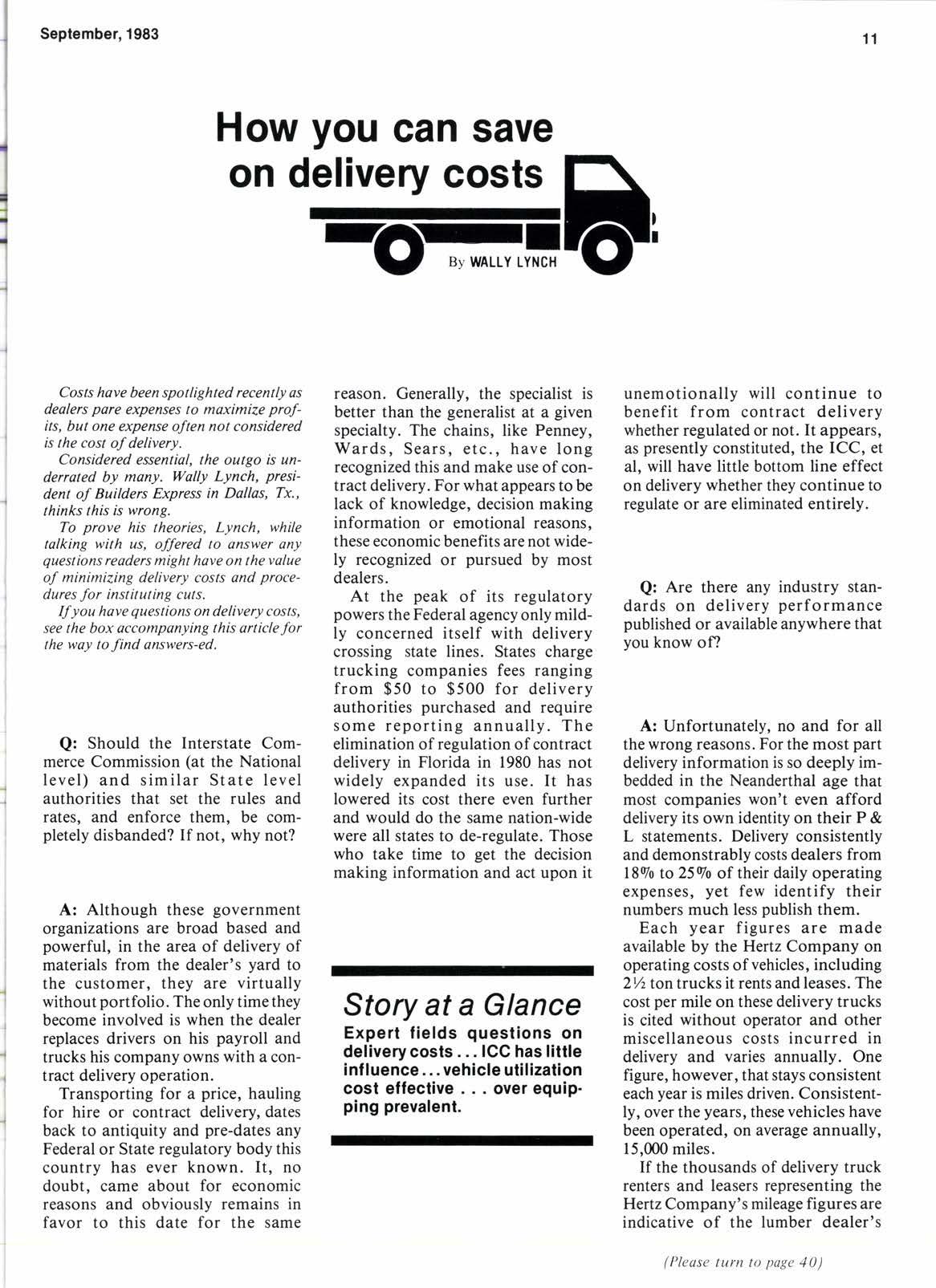
2 minute read
on delivery costs How you can save Gr a,
Costs have been spotlighted recently os dealers pare expenses to maximize profits, but one expense often not considered is the cost of delivery.
Considered essential, the outgo is underroted by many. Wally Lynch, president of Builders Express in Dallas, Tx., thinks this is wrong.
To prove his theories, Lynch, while talking with us, offered to answer any questions readers might have on the volue of minimiling delivery costs and procedures for instituting cuts.
Ifyou hove questions on delivery costs, see the box accompanying this article for the way to find answers-ed.
Q: Should the Interstate Commerce Commission (at the National level) and similar State level authorities that set the rules and rates, and enforce them, be completely disbanded? If not, why not?
A: Although these government organizations are broad based and powerful, in the area of delivery of materials from the dealer's yard to the customer, they are virtually without portfolio. The only time they become involved is when the dealer replaces drivers on his payroll and trucks his company owns with a contract delivery operation.
Transporting for a price, hauling for hire or contract delivery, dates back to antiquity and pre-dates any Federal or State regulatory body this country has ever known. It, no doubt, came about for economic reasons and obviously remains in favor to this date for the same reason. Generally, the specialist is better than the generalist at a given specialty. The chains, like Penney, Wards, Sears, etc., have long recognized this and make use of contract delivery. For what appears to be lack of knowledge, decision making information or emotional reasons, these economic benefits are not widely recognized or pursued by most dealers.
At the peak of its regulatory powers the Federal agency only mildly concerned itself with delivery crossing state lines. States charge trucking companies fees ranging from $50 to $500 for delivery authorities purchased and require some reporting annually. The elimination of regulation of contract delivery in Florida in 1980 has not widely expanded its use. It has lowered its cost there even further and would do the same nation-wide were all states to de-regulate. Those who take time to get the decision making information and act upon it unemotionally will continue to benefit from contract delivery whether regulated or not. It appears, as presently constituted, the ICC, et al, will have little bottom line effect on delivery whether they continue to regulate or are eliminated entirely.
Story at a Glance
Q: Are there any industry standards on delivery performance published or available anywhere that you know of?
A: Unfortunately, no and for all the wrong reasons. For the most part delivery information is so deeply imbedded in the Neanderthal age that most companies won't even afford delivery its own identity on their P & L statements. Delivery consistently and demonstrably costs dealers from l89o to 250/o of their daily operating expenses, yet few identify their numbers much less publish them.
Each year figures are made available by the Hertz Company on operating costs of vehicles, including 2Vz tonfiucks it rents and leases. The cost per mile on these delivery trucks is cited without operator and other miscellaneous costs incurred in delivery and varies annually. One figure, however, that stays consistent each year is miles driven. Consistently, over the years, these vehicles have been operated, on average annually, 15,000 miles.
If the thousands of delivery truck renters and leasers representing the Hertz Company's mileage figures are indicative of the lumber dealer's










